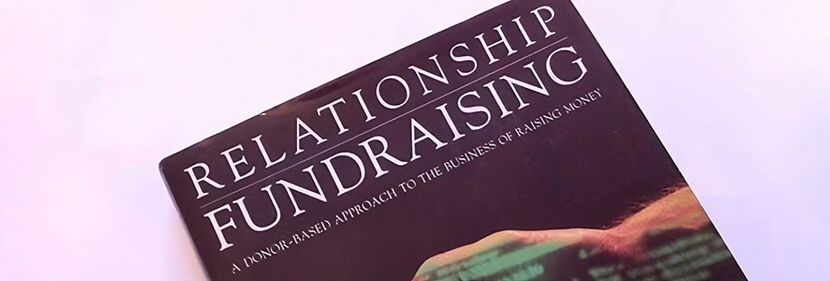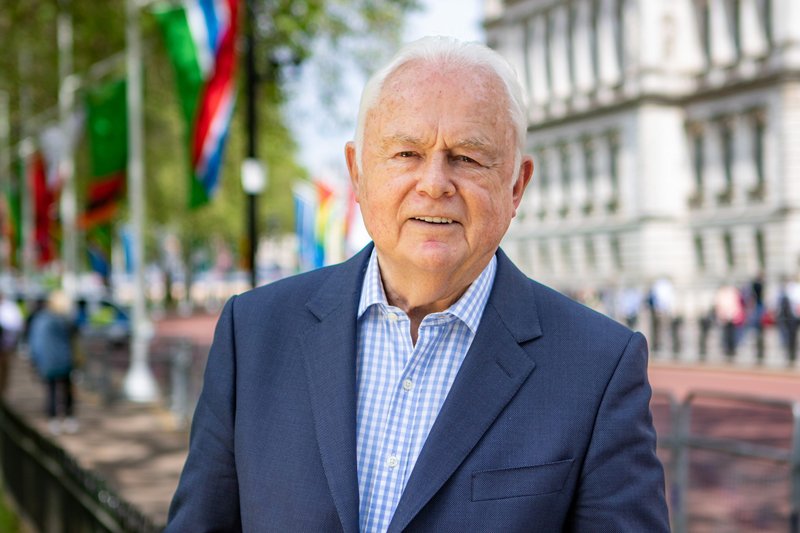Ken Burnett
Harold Sumption’s successor.
Today, those of us of a certain age regard Harold Sumption as the father of modern fundraising. I wrote about him last week and it received a terrific response. In fifty years’ time, who will be regarded as his successor? There’s only one candidate. Ken Burnett.
(Ken has no idea I’m writing this, so will be reading this at the same time as you, today.)
The Institute of Fundraising was founded in 1983. Less than ten years later, in 1992, Ken wrote Relationship Fundraising, calling it ‘a donor based approach to raising money.’ It was an immediate best-seller. Every serious fundraiser started to use it as their bible.
Harold Sumption had said some brilliant things about donors and fundraising, but he never wrote them down and, in practice, much fundraising was essentially transactional. We fundraised at and from people. Ken was the first person to write about fundraisers building relationships with donors.
The impact on the mind-sets of fundraisers, and their CEOs, trustees and other senior managers is impossible to overstate. The concept of relationship fundraising swiftly acquired a critical mass, and then became universal. Relationship fundraising became the right way of seeing and doing things. And it has stood the test of time. The third edition of the book is being published this year.
Ken became the most renowned and influential person in UK fundraising. And he quickly acquired a world-wide reputation. Ken delivered the plenary presentation at the 1st China Fundraising Conference in Beijing, the only non-Chinese speaker in the programme.
Ken will quickly say that he was simply building on Harold’s thinking. But Harold’s thinking was in aphorisms. Cleverly expressed ideas. Ken turned those ideas into practice.
So, Harold wrote: “Fundraising is not about money, it’s about important work that needs doing. If you start by asking for money, you won’t get it and you won’t deserve it.”
Very clever. But what does that mean, in practice, in an ideal world of fundraising?
Ken answered that. “Asking for money should be the last thing you do after communicating appropriate information and inspiration. By then the pressure should be off, the outcome a foregone conclusion, decided by the donor.”
And he meant it. Fundraisers could actually do it.
The Commission on the Donor Experience
Sir Martyn Lewis CBE – Chair of the Commission
But in around 2010 a new generation still proudly called themselves relationship fundraisers and bought the book. But too many didn’t read it.
In 2015 the fundraising edifice collapsed. The death of Olive Cooke was a lightning rod for public antipathy towards bad fundraising practice. Ken had a, perhaps controversial, take, suggesting that Olive Cooke should be seen not just as a victim, but also, by us fundraisers, as The Patron Saint of Fundraising.
Ken and I had lunch once a month. Together we bemoaned what was happening, but the idea of setting up the Commission on the Donor Experience was solely Ken’s. I told him politely that you couldn’t just set up a Commission; a Commission can only be set up by a government or other official body with authority to do something.
Such mere trifles were of no consequence to Ken. We set up the Commission.
In the largest mobilisation of volunteers in our sector ever, around 2,000 individuals registered with, contributed content to, supported projects or otherwise assisted the Commission on the Donor Experience (CDE). It was an initiative set up directly in the wake of the scandal to define and document the comprehensive culture change that was called for, if fundraising was to put its house in order.
SOFII
Probably the single initiative that I have seen Ken be most proud of is his setting up of the Showcase of Fundraising Innovation and Inspiration. (SOFII.) He talked about it for years before finding the time and resources actually to set it up.
The SOFII collection is the most comprehensive, best organised, and most inspiring collection of fundraising related content from around the world.
The collection consists of three types of content:
Exhibits: well documented examples of fundraising campaigns.
Articles: written material on the art and science of fundraising, and
Resources: a variety of useful links, interactive content and other resources.
Direct influence on fundraising
Of course, Ken always had a ‘day job’. Like Harold Sumption, he created and ran some of the best agencies in fundraising.
He founded the influential Burnett Associates agency, the first company of its type in Europe. For two decades Burnett Associates produced some of the most original, donor-focused and effective communications campaigns to be found anywhere.
Working with Alan Clayton, Ken was chairman of Cascaid, the agency Alan set up which then became Clayton Burnett.
In those roles Ken led teams that produced many of the best fundraising concepts, ideas and communications of their time.
Let me focus on just one.
Donor choice
Ken was passionate that, in ‘relationship fundraising’ the donor should be in charge of the relationship.
Many fundraisers are too ‘inside out’, focusing on what they want to tell the donor. I believe we should be much more ‘outside in’, focusing on what the donor wants to hear from us.
So, Ken championed the idea of giving donors real ‘choices’. “I want this.” “I don’t want that.”
This is a very early example of Ken’s thinking being put into practice.
Ken, the person
I first knew Ken back in 1977, when he was at Action Aid and I was at Help the Aged. When he started as an agency man, I had started as Appeals Director of the NSPCC, and was one of his first clients. Over the decades we got to know each other well as colleagues and friends.
I believe the NSPCC became one of Burnett Associates’ best clients. They were certainly one of our best external collaborators. In 1982 the NSPCC set up a membership scheme, ‘Friends of the NSPCC’. Burnett Associates produced ‘the Children’s Friend’ as our magazine for mid-level donors. It was expensive, of course, but proved beyond doubt to be well worth the cost and received terrific response from donors.
Ken also loved working at an individual, human level. Bringing out the best from a fundraiser who loved their profession.
On the CDE, one of the project owner’s final report didn’t meet Ken’s exacting standards. “Good enough is not good enough” was one of his watchwords. So, he invited the project owner to his home in Highbury, and they spent the day together working on it. The result was perfect. The project owner was absolutely thrilled and delighted. Once again, Ken made the difference that turned good into great.
If you asked him, Ken would describe himself as a writer. Indeed, his written works are prolific and I won’t even attempt to do justice to them, here.
Ken wrote for the national press as well.
I am also not going to do justice to the contribution he made to the many charities of which he was a trustee or Chair.
Nor Ken’s contribution, daily while running his agencies, to so many individual charities: their thinking, their communications with their donors and their day-to-day work.
But all these will probably have had as much actual influence on fundraising practice as his, first, book.
Who next?
You know when people talk about the Queen as the person who bound the country together? Ken did the same for the fundraising sector. He will vehemently deny it, but he really did.
But, who will be next?
I was giving Ken a lift home in 2016, and he told me he was going to retire. Totally and completely. No talks. No articles. Non-negotiable. Retire to the country. Doesn’t Suffolk look nice?
So, here he is in Suffolk; writing, directing and then taking the lead role in plays. (As you can see, in his soft way, Ken was always ‘in charge’; we just didn’t see it in his behaviour.)
It’s now 2024 and Ken is still active, in fundraising, and influencing fundraising. Expect more in future years, of which there are many.
You can’t keep a good man down.
⟶ About Giles⟶ Services⟶ Back to overview







